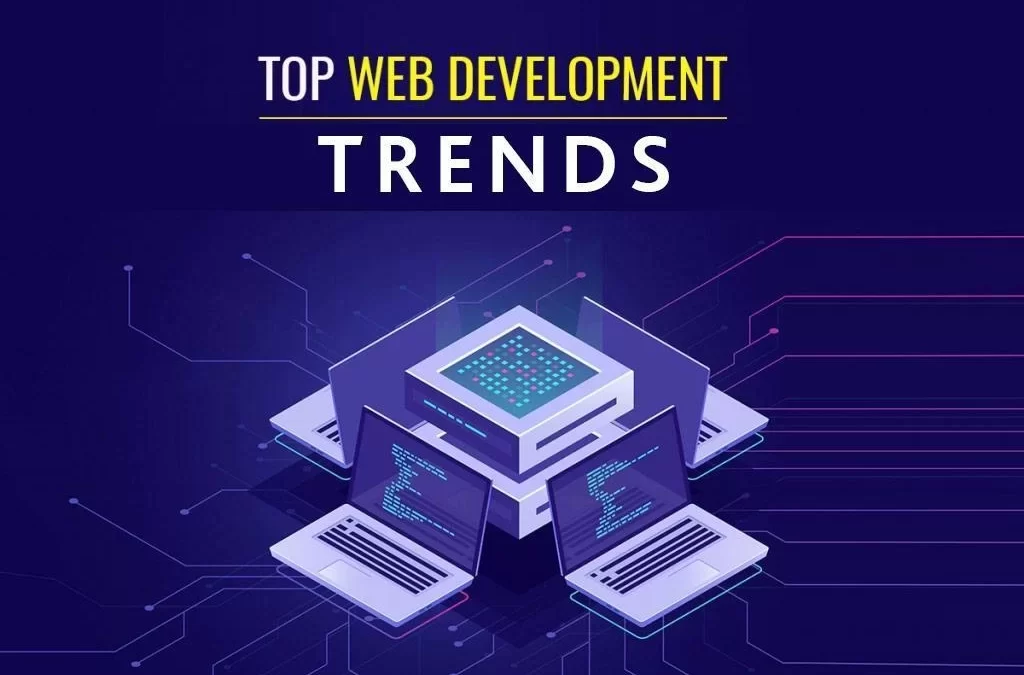Web development is an ever-evolving field, with continuous advancements in technologies and practices. To stay competitive and offer exceptional user experiences, developers must be aware of the latest trends shaping the industry. The code that instructs websites how to operate is written by web developers. For any but the simplest websites to work, both front-end/client-side development and back-end/server-side development are required. To guarantee that their websites function as intended on every type of computer, mobile device, or other screen size, web developers construct visual designs and layouts, integrate graphics and content, optimize website speed and capacity, and test. Web design, which entails creating the features and functioning of websites and apps, and web development go hand in hand. The word “web development” is frequently used with a wide meaning that encompasses both the creation and programming of websites and applications in addition to website design.
You’ll undoubtedly notice that websites’ appearance and features are continually evolving. The initial web page that introduced the World Wide Web in 1991 appears quite different from a typical website nowadays.
We will explore the most prominent web development trends for modern websites in 2023.
Table of Contents
Progressive Web Apps (PWAs)
Progressive Web Apps have gained immense popularity due to their ability to combine the best of both web and mobile applications. PWAs offer a seamless experience to users, even with limited network connectivity. They are fast, responsive, and provide native-like app interactions on various devices. Additionally, PWAs are highly secure, making them an ideal choice for modern websites seeking better user engagement and performance.
Single Page Applications (SPAs)
Single Page Applications have become increasingly prevalent in recent years due to their fluid user experience. SPAs load content dynamically, eliminating the need for multiple page refreshes, resulting in faster load times and smoother transitions. With frameworks like React, Angular, and Vue.js, developers can efficiently build interactive SPAs, offering users a seamless browsing experience.
Voice User Interface (VUI)
The rise of voice assistants and smart speakers has propelled Voice User Interfaces into the mainstream. Integrating VUI into websites allows users to interact with the content through voice commands, enhancing accessibility and user engagement. As natural language processing technology improves, VUI will become a standard feature on modern websites, providing an innovative and hands-free browsing experience.
Artificial Intelligence (AI) Integration
AI is revolutionizing web development, enabling developers to create more personalized and intuitive user experiences. AI-powered chatbots are becoming essential for websites as they offer instant support and enhance customer interactions. AI algorithms also help analyze user behavior, providing valuable insights to optimize content and improve conversion rates. Integrating AI into modern websites ensures a competitive edge in the digital landscape.
Dark Mode
Dark mode has become a favorite feature among users, reducing eye strain and saving battery life on devices with OLED screens. Web developers are now incorporating dark mode options into their websites, providing users with the flexibility to choose their preferred color scheme. Implementing dark mode not only enhances user experience but also gives websites a modern and visually appealing look.
Motion UI
Motion UI, including animations and micro-interactions, is gaining traction as it adds a touch of interactivity and dynamism to websites. When used judiciously, motion UI elements can guide users, draw attention to important content, and create engaging browsing experiences. However, it’s crucial to strike the right balance, ensuring that animations do not overwhelm or distract users.
WebAssembly (Wasm)
WebAssembly is a low-level bytecode format that allows high-performance execution of code on web browsers. With Wasm, developers can build complex applications that run at near-native speeds, opening new possibilities for web development. As browser support for WebAssembly improves, it will become a powerful tool for building sophisticated web applications and games.
To increase page speed, developers must continue to write code.
People get increasingly irritated with slow-loading websites as websites become more sophisticated and as user bandwidth increases. When a website takes too long to load, users quickly give up since they want quick experiences. According to studies, consumers anticipate websites to load in as little as two seconds, and they start to get impatient after three seconds. Google realized this a few years ago and began penalizing slow-loading websites, especially in their mobile search engine, by incorporating page speed as one of its ranking factors.
In 2023, web development continues to evolve rapidly, with innovative technologies shaping the landscape of modern websites. Progressive Web Apps, Single Page Applications, Voice User Interfaces, and AI integration are transforming user experiences and engagement. Dark mode, Motion UI, and web assembly offer enhanced aesthetics and performance. To stay at the forefront of the industry, developers must embrace these trends and adapt them to create exceptional websites that cater to the evolving needs and preferences of users. By leveraging these trends, web developers can build more responsive, dynamic, and personalized websites, ushering in a new era of web development.



